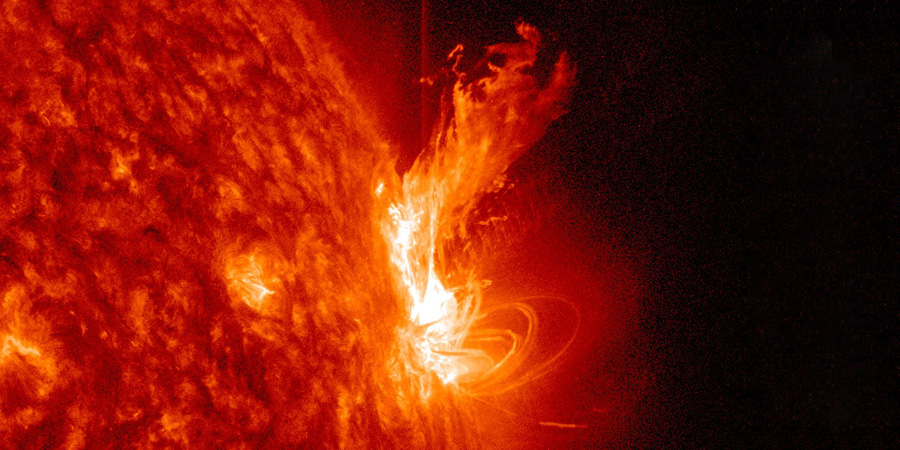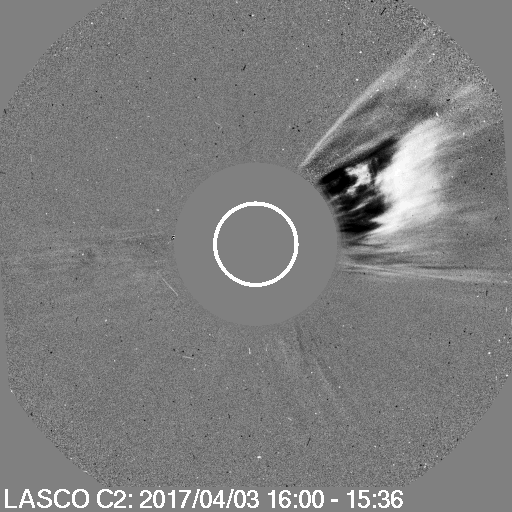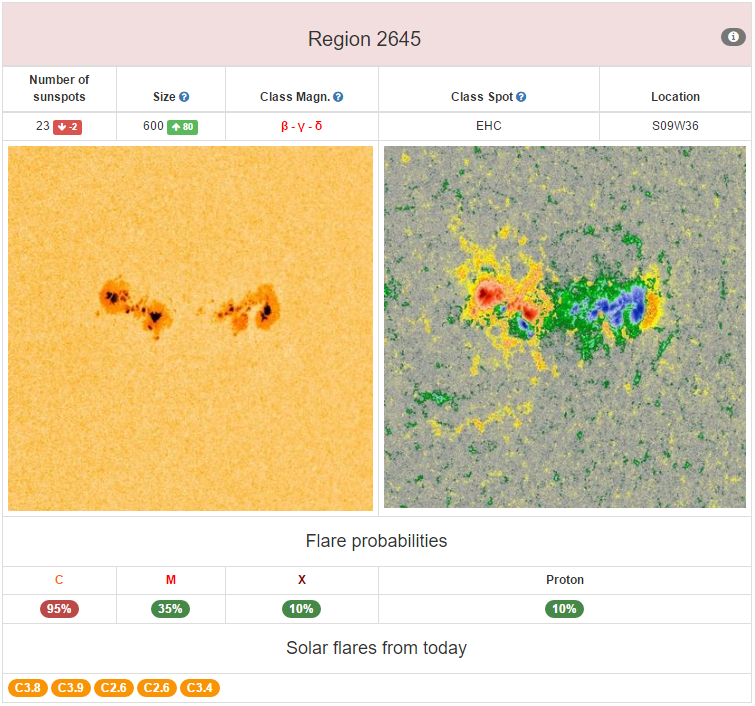Goodbye 2644
Monday, 3 April 2017 21:33 UTC

Sunspot region 2644 was again the most active sunspot region on the earth-facing solar disk today. It produced two M-clas solar flares today: an M1.2 solar flare (R1-minor) at 01:05 UTC and an M5.8 solar flare (R2-moderate) that peaked at 14:29 UTC. The M5.8 solar flare is this region's third solar flare that peaked above the M5 threshold and the strongest solar flare produced by sunspot region 2644 thus far.
The M5.8 solar flare was associated with a coronal mass ejection that is heading well west and away from Earth. There is no chance that this plasma cloud will arrive at Earth.
ALERT: Type II Radio Emission Begin Time: 2017 Apr 03 1429 UTC Estimated Velocity: 746 km/s
ALERT: Type IV Radio Emission Begin Time: 2017 Apr 03 1432 UTC

⇧ NASA/ESA SOHO/LASCO C2 frame showing the CME from today's M5.8 solar flare.
Sunspot region 2644 is now located at the western limb and will now slowly rotate onto the far side in the coming 24 hours. M-class activity remains possible from Active Region 2644 until it has fully rotated behind the western limb.
Sunspot region 2645
Sunspot region 2645 was relatively quiet today compared to sunspot region 2644 as it only produced a couple of C-class events. It keeps its Beta-Gamma-Delta magnetic layout but did show signs of decay. It's magnetic delta structure in the trailing portion of group has weakened. It can still produce an M-class event but it needs to be quick if we want to have an earth-facing eruption! Click here to view the most recent SDO imagery of sunspot region 2645.

Thank you for reading this article! Did you have any trouble with the technical terms used in this article? Our help section is the place to be where you can find in-depth articles, a FAQ and a list with common abbreviations. Still puzzled? Just post on our forum where we will help you the best we can!
Latest news
Latest forum messages
Support SpaceWeatherLive.com!
A lot of people come to SpaceWeatherLive to follow the Sun's activity or if there is aurora to be seen, but with more traffic comes higher server costs. Consider a donation if you enjoy SpaceWeatherLive so we can keep the website online!

Space weather facts
| Last X-flare | 2025/03/28 | X1.1 |
| Last M-flare | 2025/03/31 | M1.2 |
| Last geomagnetic storm | 2025/03/27 | Kp5 (G1) |
| Spotless days | |
|---|---|
| Last spotless day | 2022/06/08 |
| Monthly mean Sunspot Number | |
|---|---|
| February 2025 | 154.6 +17.6 |
| March 2025 | 127 -27.6 |
| Last 30 days | 127 -25.7 |


